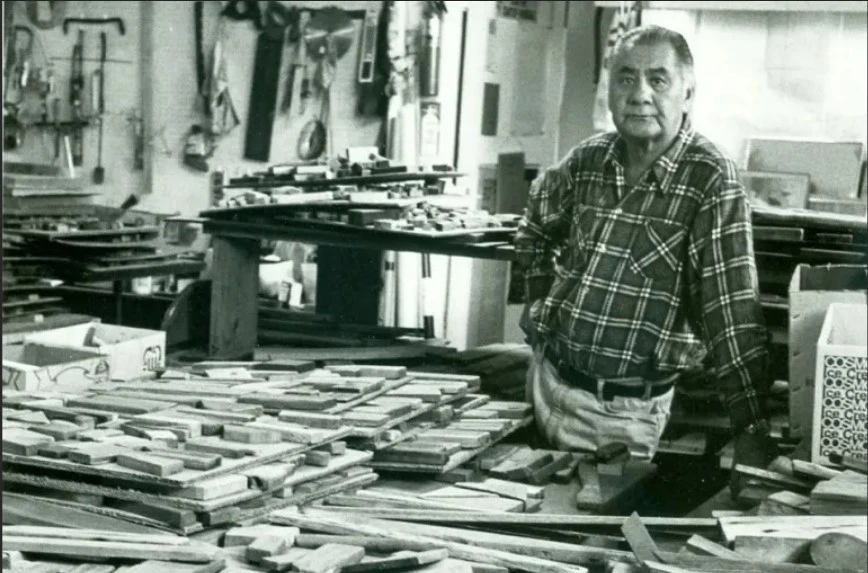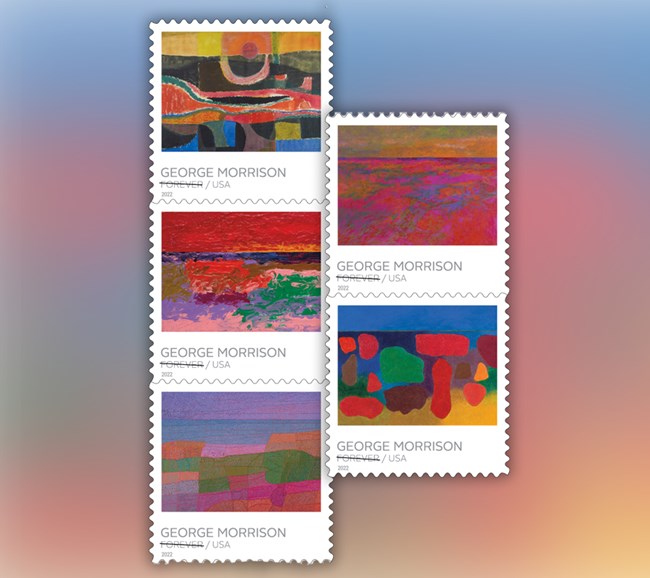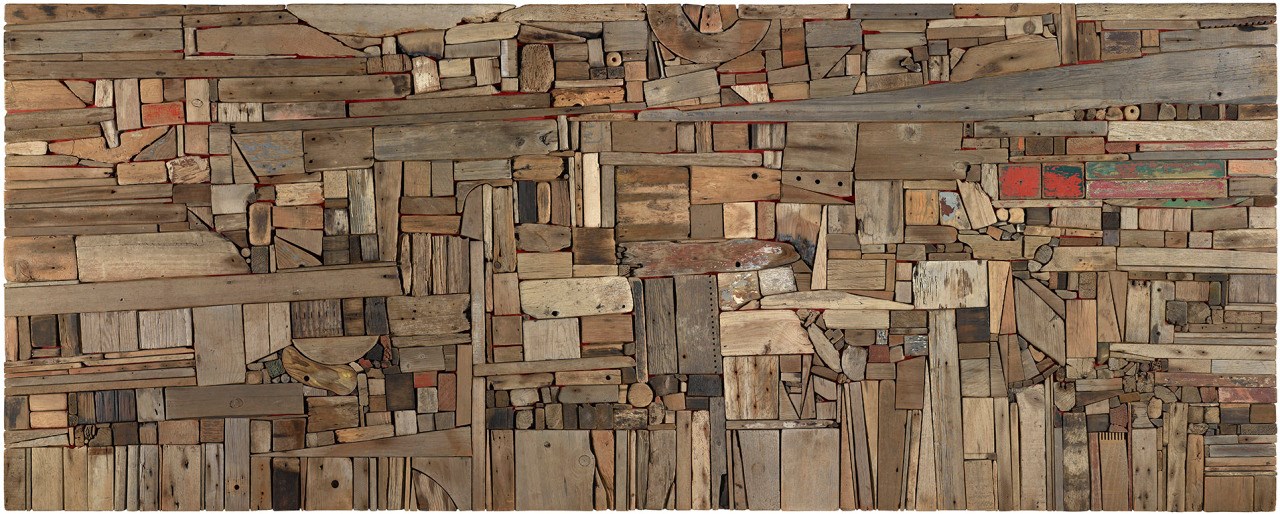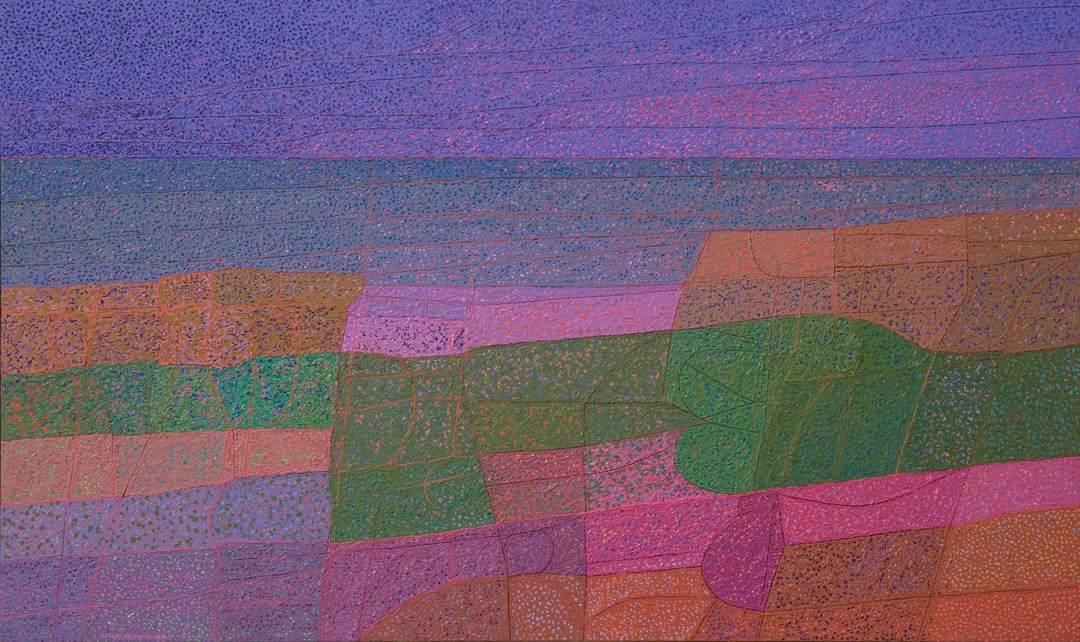Last updated: December 10, 2024
Article
George Morrison

Photo courtesy of Briand Morrison

United States Postal Service photo
Grand Portage Artist Honored with USPS Stamps and Exhibit
In celebration of the United States Postal Service inaugurating the George Morrison stamps this April 2022, Grand Portage National Monument invites you to enjoy the world of George Morrison. A set of five stamps showcases one of this nation’s greatest modernist artists. Grand Portage National Monument and the community of Grand Portage is pleased to join the USPS with an exhibit about his life and work on the second floor of the Heritage Center. Connections will be up through the end of October, 2022.
George Morrison was the first Native American Artist to have his work recognized and displayed in the White House. In 1997, Bill Clinton bestowed a special honor by accepting his sculpture Red Totem. Another of Morrison’s iconic Red Totems can be seen in the foyer of the Sawtooth Mountain Clinic in Grand Marais, MN.
George Morrison, Artist and Visionary: A Grand Portage Original
World renown artist and visionary George Morrison, a son of Grand Portage was born in Chippewa City outside Grand Marais, Minnesota in 1919, and grew up with the beauty of Lake Superior as a backdrop. Through his art, he shared this landscape with the world.
I feel a reverence for the land and the lake. You come back to your own environment and how you grew up. Maybe you are drawn to the people too- those you grew up with. A certain relationship to those people and a relationship to the land, rocks, and trees. This may have influenced my art to a certain degree. The way driftwood is indirectly related to nature. ~George Morrison, 1987
St. Francis Xavier Church & Chippewa City
Partly because of its proximity to work at the building projects around Grand Marais, Chippewa City was home to many Grand Portage Band members. This was the Morrison home where George grew up with his eleven siblings. Today all that remains of Chippewa City is the St. Francis Xavier Church. This church was an important part of the Morrison family, from its construction to maintenance.
My grandfather James Morrison Sr.., was one of the elders and founders of St. Francis Xavier Church…He usually sat in a gray pulpit chair he had built. The chair was always located to the left of the church door where he greeted people and officiated as the bell ringer. When I stand on Chippewa Beach and look up- to see the church, it is the only remnant of my grandfather. The church remains a symbol of the community and our life here. ~ George Morrison
In 1998 the Catholic diocese gifted the building to the Cook County Historical Society with a clause stating that religious ceremonies can no longer take place within. An exception for Mr. Morrison allowed a funeral for this son of Chippewa City – the passing of George Morrison on April 17th, 2000.
But all the time I thought of my roots. I never lost sense of my beginnings. ~ George Morrison

Photo courtesy of Briand Morrison
Even when working, teaching, and studying in New York and the East Coast, Lake Superior never left the artist. He still found himself on Cape Cod, Nantucket, and other beaches, searching for horizons, seashells, bones, and driftwood, never far from his days in Chippewa City searching the beach below the Church.
I seek the power of the rock, the magic of the water, the religion of the tree, the color of the wind, and the enigma of the horizon.
~ George Morrison

Photo courtesy of Briand Morrison
Inspiration of Nature
Lake Superior changes frequently depending on when you look – Caribbean blues, ominous grays, white-caps, and sparkly silvers. The world changed as well when it saw the pieces George Morrison derived from this moody lake. In a 1999 interview with a Minneapolis newspaper, George Morrison mentioned that depicting Lake Superior was an obsession for several years.
The lake has certain magical qualities for me… I like to be near it. To be part of it.
~ George Morrison
George Morrison was more than an artist. Art filled his heart, yet education allowed him to share his vision by teaching art to students at Rhode Island School of Design and the University of Minnesota, Minneapolis. Mr. Morrison worked continuously – ideas poured through his hands and onto canvas, paper, wood, or stone.
Upon retiring from the University of Minnesota, George Morrison returned home to Grand Portage and Lake Superior and a full, satisfying life. His studio, known as Red Rock, was his solace. He knew every rock on his shore and could sit for hours mesmerized by the lake.
One thing that made me come back is the land. I feel a reverence for the land and the lake. You come back to your own environment and how you grew up. Maybe you are drawn to the people too- those you grew up with. A certain relationship to those people and a relationship to the land, rocks and trees. This may have influenced my art to a certain degree. The way driftwood is indirectly related to nature.
There is something inside that always comes through. Gradually, the landscape themes crept through into my art. The indirect influences of land, water, and wood. I have never tried to prove that I was Indian by doing baskets, or painting feathers.
~ George Morrison, 1987
Bibliography:
Drouillard, Staci Lola. Walking the Old Road: A People’s History of Chippewa City and the Grand Marais Anishinaabe. University of Minnesota Press, 2019.
Galt, Morgot Fortunato. Turning the Feather Around: My Life in Art. Minnesota Historical Society Press, 1998.
Kostich, Dragoš D. George Morrison: The story of an American Indian. Dillon Press, Inc., 1976.
Lowe, Truman T. Native Modernism: The Art of George Morrison and Allan Houser. NMAI, Smithsonian Institution, 2004.
Rushing III, W. Jackson and Kristin Makholm, Modern Spirit: The Art of George Morrison. University of Oklahoma Press, 2013.
Van Tassell, Katherine. Standing in the Northern Lights: George Morrison, A Retrospective. Minnesota Museum of Art, 1990.
